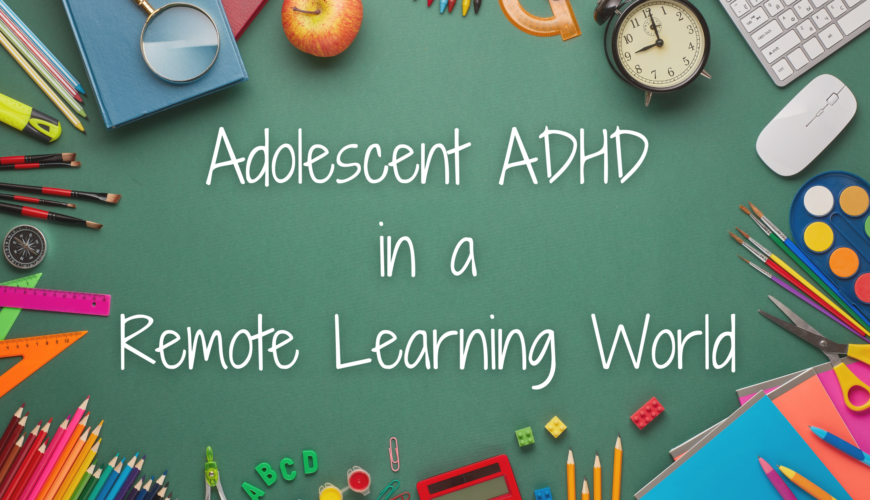The COVID-19 pandemic has altered life as we know it in a variety of ways. It’s hard to believe that we are about to turn our calendars to March again, as the majority of communities shifted to remote work and school in March of 2020. The pandemic has impacted society in a variety of ways, and some individuals have struggled more than others in this “new normal”. For children and adolescents living with ADHD, the shift to remote learning has brought about several unique challenges.
What is ADHD?
ADHD, or attention deficient hyperactive disorder, is a neurodevelopmental disorder that usually occurs in childhood, though it can be diagnosed in adulthood as well. It can be difficult to diagnose ADHD because the symptoms are often viewed as typical childhood behaviors, such as the inability to sit still, concentrate, stay organized, or complete tasks. Symptoms of ADHD typically arise between the ages of 3 and 6 years old, and an estimated 6.4 million American children have been diagnosed with the disorder.
The Shift to Remote Learning
In the age of COVID-19, many communities have adopted alternative school schedules with the health and safety of students and teachers in mind. Whether students are in the classroom five days a week at socially distanced desks, learning from home and logging onto a laptop each day, or going into the classroom on an alternating basis, the COVID-19 pandemic has totally altered the typical school year. This is stressful for any student to manage, and it can be even harder for those living with ADHD.
Complications with ADHD
Children with ADHD often exhibit symptoms of hyperactivity and inattention. They may struggle with executive function skills, which means they may lack the ability to plan and organize their time and tools to effectively complete assigned tasks. Students with ADHD typically require a clear routine and rules set forth by a teacher who is present. For this reason, the deviation from a typical in-person lesson can prove to be challenging.
How You Can Help
Though remote schoolwork can be a daunting challenge for students with ADHD, there are plenty of ways you can help the adolescent in your life navigate this unique time. Structure and routine can help reduce stress an uncertainty, which is why scheduling consistent times for sleeping, eating, work, and play can make a huge difference. Be sure to include time for exercise each day, as studies suggest children living with ADHD have shown improved attention after just 20 minutes of physical activity. If possible, designate an area within the house that is free from distractions and noise since a clean and quiet workspace fosters concentration and focus.
Join a Clinical Trial with Preferred Research Partners
If an adolescent you care for is living with ADHD, consider a clinical trial with Preferred Research Partners in Little Rock, Arkansas. You may be eligible to receive treatment at no cost to you and contribute to the advancement of medical research!

